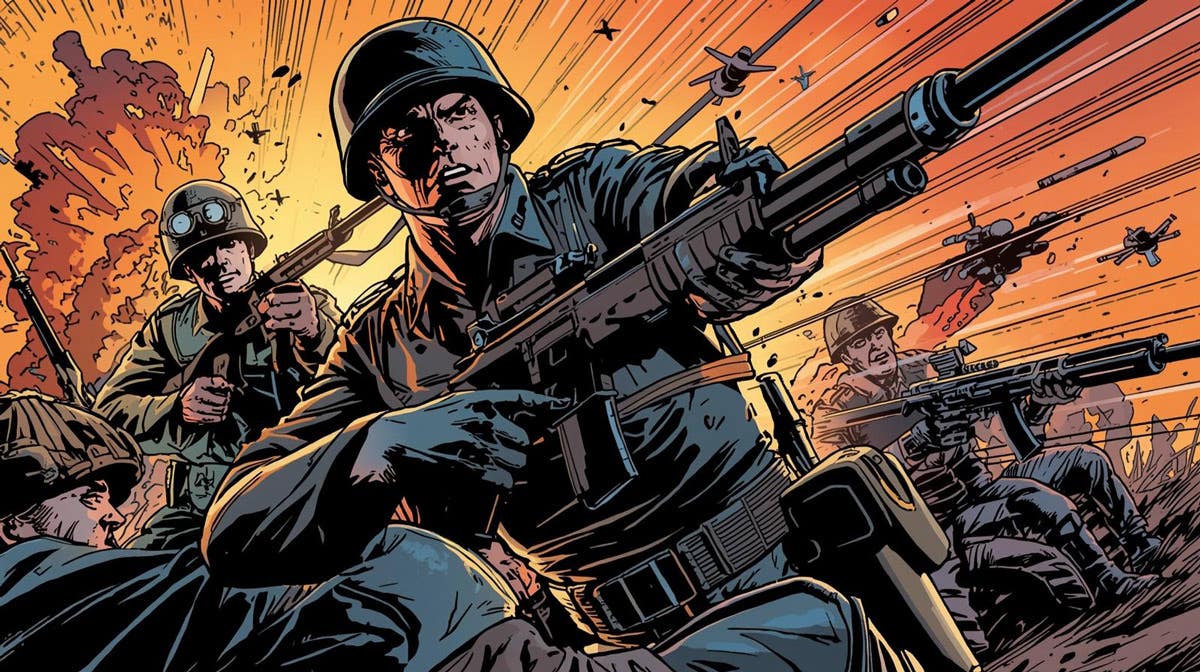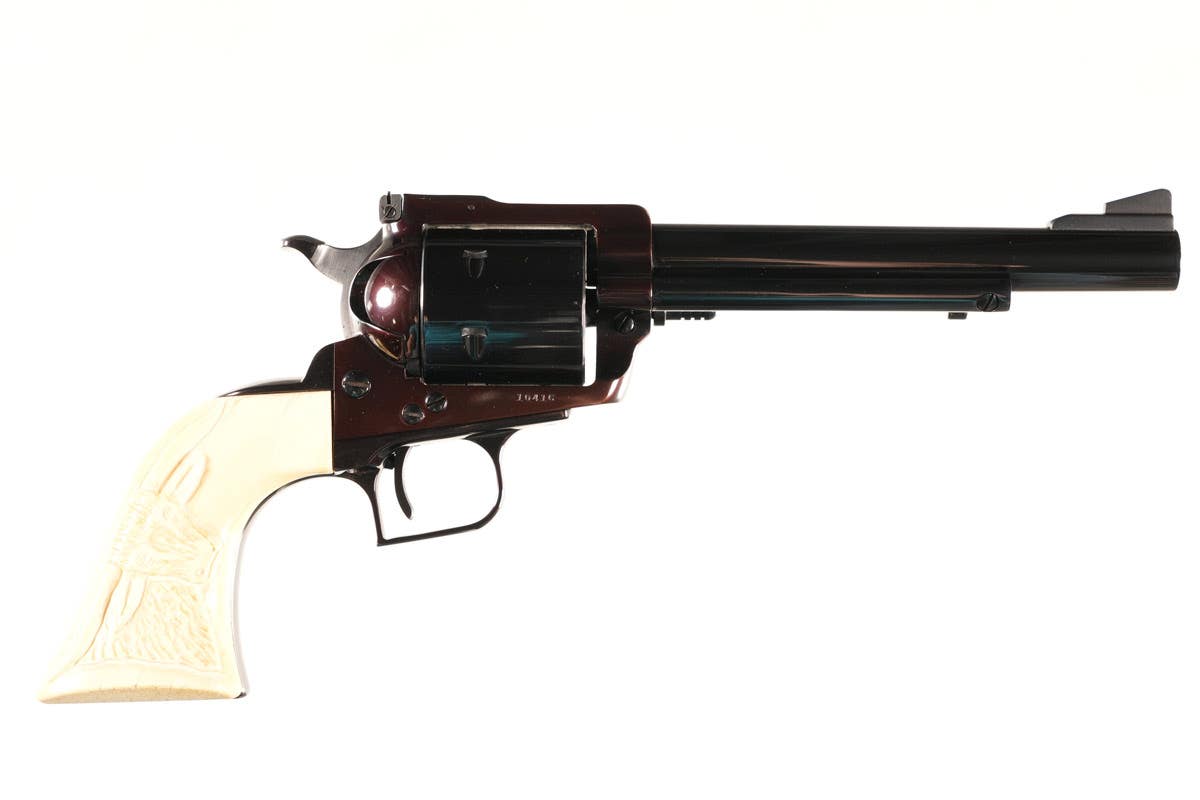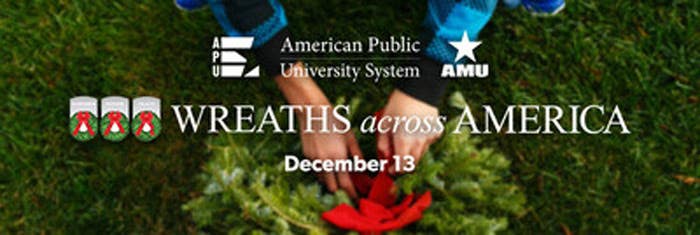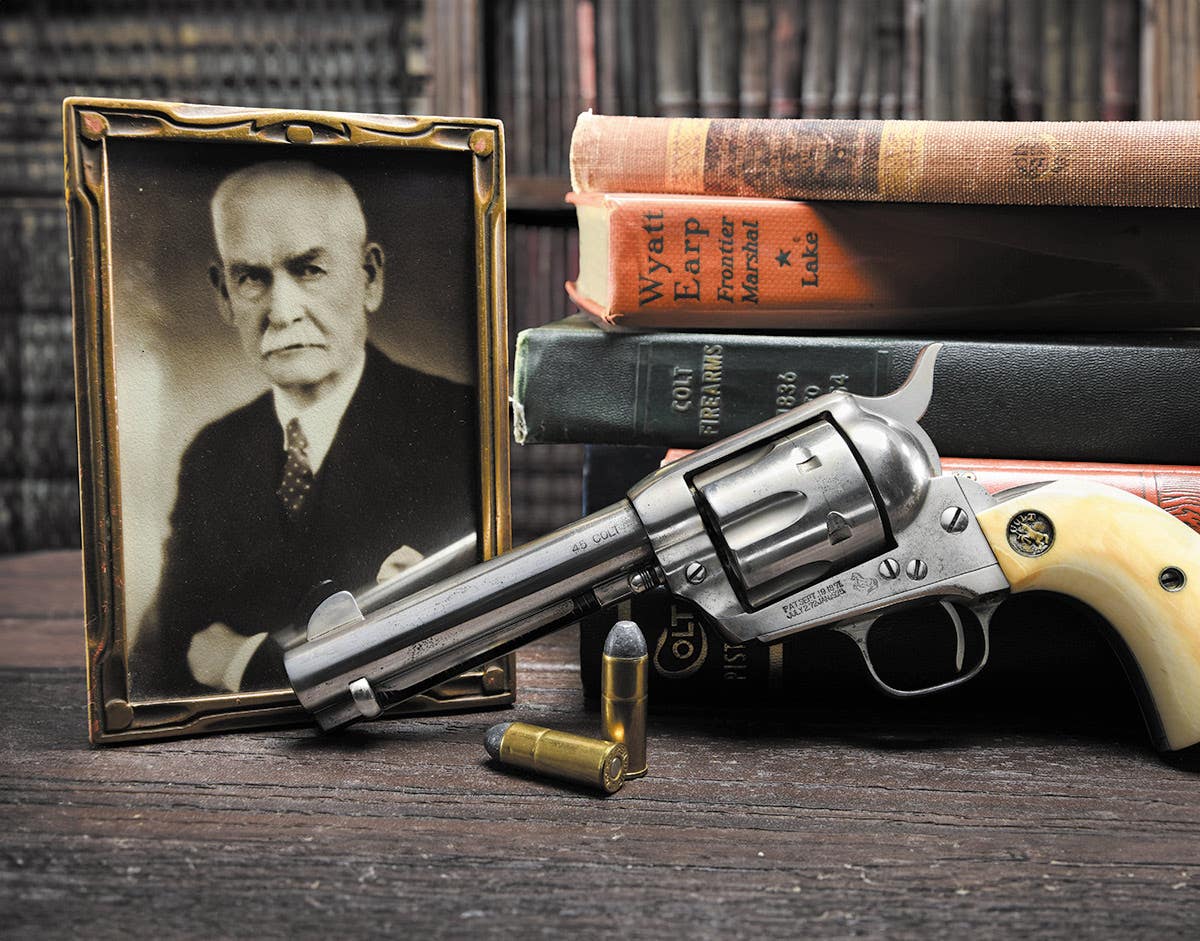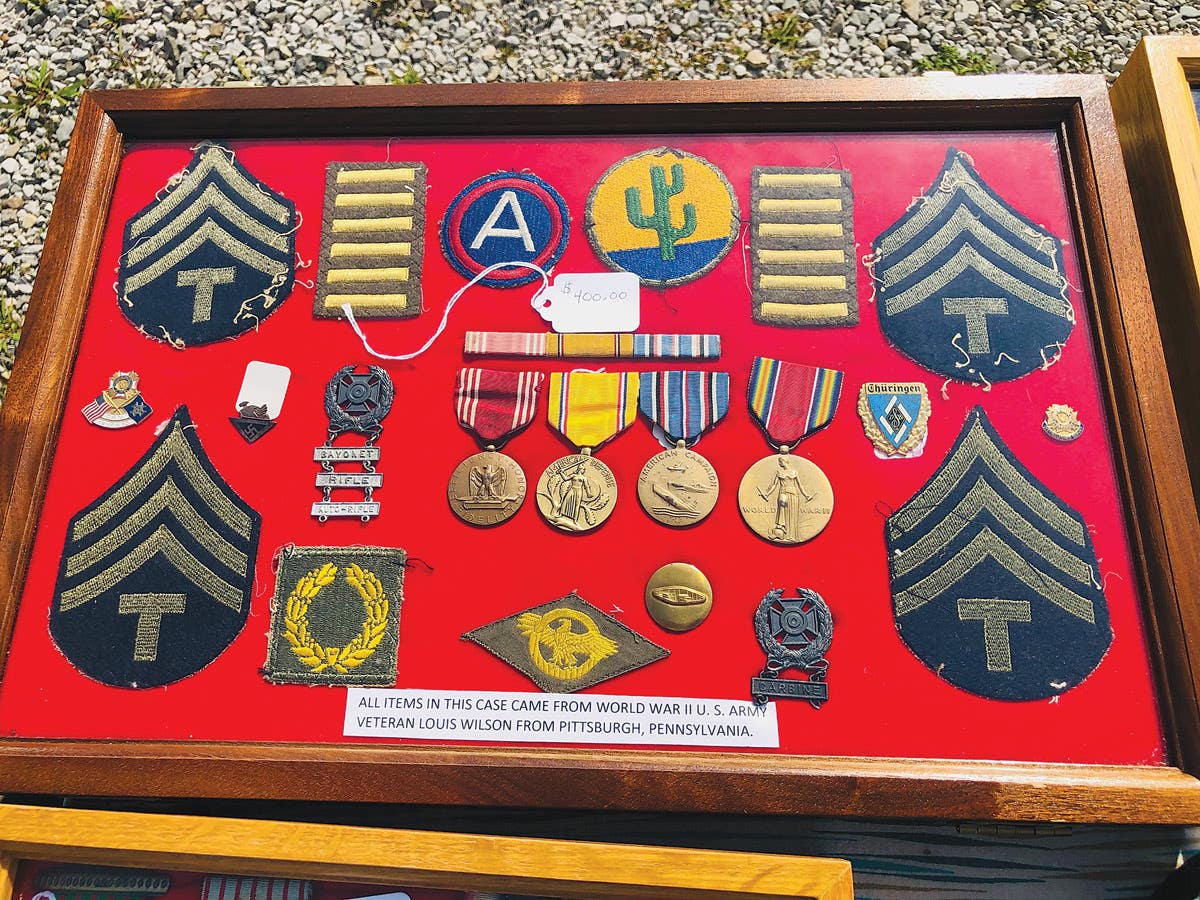If the Story Doesn’t Fit…
Greetings, While writing a catalog description for a group of material that belonged to a Marine from around 1900, I discovered the details of the uniform (and the consignor’s notes)…
Greetings,
While writing a catalog description for a group of material that belonged to a Marine from around 1900, I discovered the details of the uniform (and the consignor’s notes) just didn’t match the soldier’s record. Everything was close, but the dead give-away were the chevrons on the jacket. Thanks to Ancestry.com posting the Marine Corps’ rolls online, I could follow this particular Marine’s career from his enlistment in 1899 until he was discharged in 1904. Indeed, he served aboard the ship that the consignor said he did, so that justified the ship’s photos and other ephemera in the group. But the NCO chevrons: There was nothing to explain those. According to the muster rolls, the guy was never promoted. Scratching my head, I decided to put the group aside and think on it before I finished the description.
Soon thereafter, I received a call from a German reader. He was interested in collecting WWII U.S airborne material. A European dealer had just offered him a pair of “paratrooper kneepads.” “No such thing,” I told him without even checking a reference. He went on to explain how the kneepads were described to him. Apparently, according to the seller, they were from a large lot “recently discovered” at a base used for training American paratroopers during WWII.
Again, I explained to him, there simply were no standardized kneepads issued to American paratroopers during WWII. Kneepads were a distinctly European item at that time, so it stood to reason that someone could make the mistake of assuming that American paratroopers wore them as well. This was clearly a case of someone trying to make the story fit the artifact.
Taking a break, I leaned back in my chair to open the morning mail. A Military Vehicles reader sent me a note with a couple of photos of a jeep he had recently purchased. His wrote in his letter how the jeep—according to the seller—had been used to drive Eisenhower around Europe. The writer innocently asked me how he could document such an assertion. After all, he knew the jeep’s serial number.
I couldn’t believe it! It seemed as if everyone I encountered was more inclined to buy and sell stories rather than the artifacts. I wrote a reply in which I repeated what most MV collector already know, “Vehicles were not assigned to units by serial numbers but rather, by the registration number the Army assigned to it.” I went on to explain, if he could recover the vehicle’s registration number from the hood, he could start the long task of comparing it to photos of Ike in jeeps. Without coming out and saying, “Man, were you sold a tall-tale,” I tried to demonstrate that stories like that require a lot of research and evidence before they can add legitimate value to an object.
Figuring that I had a morning’s work done, I decided it was time to take my lunch break. I am fortunate to work close to a state historic site with a creek running through it, so each day, I take my lunch down to the creek and listen to the little waterfalls while I eat and try to clear the morning’s distractions and stressers from my mind. As I sat there watching a turtle struggle to climb to the top of large branch, I thought about the idea of making a story fit the artifact. At about the same time the turtle settled at the end of the branch to bask in the warm fall sun, I felt my ears turning red. I had recalled my first instance of trying to make the story fit the artifact.
I was only twelve years old when I talked my dad out of the pair of side-buckle cavalry boots he brought home from his service during WWII. I didn’t want the boots for myself, but rather, to trade to a friend for a Model 1858 “Hardee” hat. Even though this “friend” was more than 20 years older than me, I truly believed I was making a good trade. I trusted him when he told me the hat was a genuine Civil War item.
Before that point, I had never seen an original Hardee hat. I didn’t have a clue of how the interior of an original looked. So, when I took my newly acquired hat home, I naturally wanted to learn all that I could.
I took photographs of the hat, the label on the leather sweatband and the only insignia—a red artillery hat cord with tassels. I sent the photos to the head historian at Fort Snelling State Historic Site in St. Paul, Minnesota, because I knew he was a Civil War scholar. Patiently, I waited for his reply.
A couple of weeks had passed when I received a very polite letter describing how my hat was a modern reproduction. The chief historian explained that no Civil War hat carried a label like the one on the sweatband. He even sent me a photocopy of the type of label normally found in the crown of Civil War era regulation hats. The only positive comment he offered was that the artillery cord appeared to be an original.
I could not simply accept this explanation. I needed to believe it was an original hat—after all, I traded my Dad’s boots for it! The first thing I did was pealed the offending label off of the sweatband. Then, I carefully concocted a story about how I had two hats—a repro and an original—and had simply photographed the wrong one. I told this embarrassing lie to myself and to others, all in the hopes to legitimize the foolish mistake I made of trading my dad’s boots for a repro hat.
I don’t know what ever became of that hat…it ended up in my reenacting gear when I was older, but I outgrew it. I am sure it went the way of most of my old reenacting clothes—a burn pile in my back yard (the only good end to quality reproductions that had seen years of field service—no chance they will ever be mistaken or misrepresented as original items).
Probably half an hour passed as I stared in the direction of the turtle while I recalled that whole sordid tale from my childhood. When I snapped back to awareness, the turtle had shrunk into its shell, my lunch was gone and I was late.
When I returned to my desk, I noticed the Marine Corps grouping was right where I left it. Nothing had changed, but now, I clearly saw the answer: I couldn’t force a story around the artifacts just so they could be sold. At some point, one simply has to quit looking for the “could be’s” and “might-have-been’s” and simply accept the facts as they are presented. Sure, that might make a relic less appealing, but what would you rather have, an original artifact with an impeccable-but-boring-provenance or an artifact that has a great story that won’t hold up under scrutiny?
Wrapping artifacts in great stories—and getting away with it—was much easier in the days before the internet. But resources have become so accessible in the last ten years that the old yarn-spinners are going to have a much harder time pedaling their trumped-up relics. Internet searches and great advances in published resources makes it much more difficult to wrap a story around artifact.
As for those “paratrooper kneepads,” I left it up the German caller. I told him what I knew, I pointed him to several good web sites that deal with WWII U.S. paratroopers, and even recommended a handful of well-illustrated and documented books that have been published over the last ten years dealing with their gear. Even though I smacked the ball right back into his court, I guess he took the turtle’s approach and pulled his head back into his shell….He didn’t really say good-bye but hung up mumbling something about, “It was probably a prototype…”
Oh well, I tried.
Compile the facts and enjoy the relics,
John A-G
Editor, MT and MVM
John Adams-Graf ("JAG" to most) is the editor of Military Trader and Military Vehicles Magazine. He has been a military collector for his entire life. The son of a WWII veteran, his writings carry many lessons from the Greatest Generation. JAG has authored several books, including multiple editions of Warman's WWII Collectibles, Civil War Collectibles, and the Standard Catalog of Civil War Firearms. He is a passionate shooter, wood-splitter, kayaker, and WWI AEF Tank Corps collector.



